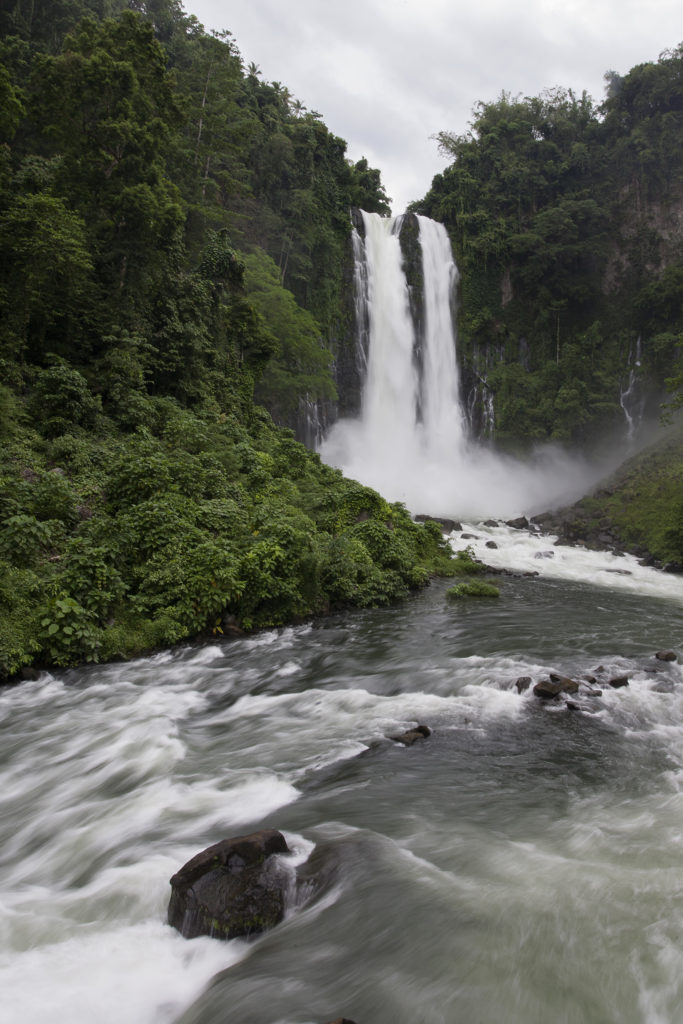Nature for nature, lessons from the folk: analysis of a Japanese tale and a Mindanao tale
(Last of two parts)
The interest in Eco Criticism and the study of ecology led me to focus on the setting of certain folk stories that eventually led likewise to the study of setting in tales from both Japan and Mindanao.
The study of nature is not new nor is it unique. Novelists take time to describe the beauty of landscapes, seascapes or make use of these environments whether these are beneficial to man or cruel and tyrannical as in Stephen’s Crane’s The Open Boat or, to Prince Genji’s meeting with the young girl Murasaki in a meadow from the Tale of Genji.

The two sample tales below examine their natural settings and determine if the non-humans in these tales have been used to benefit ‘human commerce’ or have the non-human world in these tales helped readers see the past and how the past had a more, in Wordsworth’s context, “imagined organic community”.
The mythic past of the tales show a wholesome relationship between man and nature, and therefore, influence their respective cultures, thereby forming the ideologies that they now believe in or practice.
This refers to how the Japanese, for instance, show a deep spiritual attitude towards nature, believing that for instance, trees have souls owing to the Shinto religious beliefs. Some groups in Mindanao who are animists likewise understand what nature has to offer so that there is respect for the environment, and in many cases, believe in the sacredness of the same. Rituals are practiced, for example, before any harvest or cutting of trees are done. People monitor signs from nature so that certain human activities are suspended or stopped to heed the warnings from nature.
From Japan
The Kannon in the Pine
This is a story of the Kannon, the Bodhisattva of Mercy and Compassion. She has several images in wood, stone and other mediums. Today, there is an android Kannon Bodhisatva in the KyotoTemple. Trust the Japanese to use technology to depict gods and goddesses, a statement of how they upgrade themselves in our modern times making acts of worship as relevant as ever.
The story “The Kannon in the Pine” reveals the fidelity of a monk Chokon around the years 1000’s. He met a young boy at Deer Park who asked to serve him. Chokon agreed. But after six years, the boy lay dying and instructed Chokon to put him in a coffin, hang it in the pine tree at Deer Park in Nara and after seven days told Chokon to “open the coffin and look on his back to me.”
Heeding the instructions, Chokon opened the coffin hanging in the pine tree at the Deer Park, a precautionary measure against foraging animals and flesh-eating ghosts. From Nara he proceeded to Hasedera and “went into retreat before the temple’s most holy Eleven-headed Kannon … bewailing his advancing years and charging the Kannon of having neglected him.”
Seven days later, Chokon returned to Deer Park in Nara to open the coffin hanging in the pine tree. “A delicious fragrance filled the air around the pine at Deer Park, and when he opened the coffin, a blaze of light burst forth. Inside was a life-sized statue of the Eleven-Headed Kannon. Astonished and overjoyed, Chokon regretted all his complaints. He carried the statue to Kofukuji and enshrined it on its present hall”. It is said that he passed on to Fudaraku, Kannon’s paradise, according to an oracle.
This is another lesson on the test of faith that a tree may have the spirit of a god or goddess like the Kannon who is said to be the equivalent of Kwan Yin, the Chinese Goddess of Mercy. In Japan, the Kannon can either be male or female. It is remarkable that the storytellers can be specific about place names and the implications of the ancientness of these places as well. The storyteller simply narrated in a seamless manner the young boy who offered to serve Chokon. Only the reader can realize that the Kannon was the young boy who had served Chokon before his death. It also tells us that the Kannon had forgiven Chokon despite his lack of faith, he being human after all.
From Mindanao
In some parts of Mindanao, in the olden days, ferns and coconut trees overran forests. It then followed that recipes were concocted out of fern, and coconut milk became a staple in many other kinds of food especially desserts reinforcing the belief that eating habits, or occupations spring from what the environment offers and what the practical can do to make use of these to the point that ferns have almost disappeared from Lanao’s forests – a case of man’s overharvesting of what used to be an abundant supply of edible plants because he believes that he has dominion over nature.
A Mindanao legend tells us about Lake Lanao.
Actually, Lanao means lake but the Americans took to calling the place ‘lake’ hence the repetition ‘lake lake’. It has a charming legend where St. Francis Xavier during the Spanish regime came to Marawi City, the Islamic City of Mindanao, to convert the Muslims there. But the resistance was fierce and he had to leave, crossing the lake in the process. While on the lake, he dropped his sandal and he failed to get it back so the lake took the form of a sandal. Today, this is also taken to mean that if St. Francis ever retrieves the sandal, the Muslims in the area would be converted to Christianity.
Lake Lanao is one of the deepest and coolest lakes in the Philippines. It is a source of food and the people living around it profits from its fish and other edible creatures there. Because people living across the lake want to cross it conveniently, a livelihood of ferrying people aboard, carved, often motorized boats have given people a chance at improving their lives. But the lake also threatens instant floods and many a school or madrasah are submerged once the lake overflows. It is sad to note that its waters are no longer as clear as they used to be but its existence has helped people cope with their daily lives and it cools the area during hot weather.
The Legend of Maria Cristina Falls
I retold as a poem the beautiful setting of the “Legend of Maria Cristina Falls”.
Around the place where the falls is are plants, orchids, and cattleyas, fern, large boulders, and pure, powerful falls that flow into the ocean. It is a story about twin sisters whom a Rajah wanted to marry. Since the sisters did not want to be married to the same man despite his bribery or promise of material wealth, the sisters decided to commit suicide by drowning, hence, the falls is named after them.
Another version shows that the legend of the falls must have many versions and clearly, the poem by this writer is based on the version prevalent during the Spanish period because the falls is said to have been named after a Spanish Queen, Maria Cristina.
An older version of the same story is more charming. A beautiful young woman lived with her father in a small hut by his father’s kaingin. She was so beautiful that the stars would come down to pay homage to her. How her name was lent to this majestic falls that has made Iligan City famous is not in this version. The reason for the legend’s inclusion is the fact that around any waterfalls, animals from the forest and the rivers live. It is also said that the boulders around the falls are the remains of the petrified, magical boat of Bantogen, hero of the epic Darangen. The boat was petrified after a fire razed Bembaran, the fabled kingdom, setting of the epic because the inhabitants refused to convert to Islam. It is a story that attempts to explain the end of fantasy and imagination because such fictive world is, in reality today, frowned upon by the Sunni Muslims of this part of the country and the world. Today, it is a rare occurrence for the epic to be chanted because Imams believe it is “unIslamic.”
In another version of the Legend of Maria Cristina Falls, Radia Indarapatra from the Maranao/Maguindanao epic “Indarapatra” was looking for his brother, Radia Solaiman who had been killed after an encounter with the giant Omaca-an. Radia Indarapatra became so thirsty during his long journey, he began drinking from the Agus river which dried up. Angered by this, the Radia threw a large vat against the mountain wall and water gushed from it. Henceforth, the falls that became known as Maria Cristina after some say, a Spanish Queen; or after twin sisters who lived near the falls who had jumped to their deaths because of love.
Damiana Eugenio includes in her book, Philippine Folk Literature: The Legends published by UP Press in 1987, the futile search of Radia Indarapatra for his brother, Radia Solaiman’s ring. Radia Indarapatra then built an irrigation system that later turned into a river, known today as the Agus river. The stream eventually flowed over the Agus rock shelf and formed into Iligan’s legendary falls, the Maria Cristina Falls.
Acknowledgment: This article is part of a bigger work. Dr. Ortega would like to thank the Sumitomo Foundation of Japan for the generous grant to realize her research on a comparative study of setting on selected Japanese folk stories and selected Mindanao folk stories.
comments are temporarily disabled.












